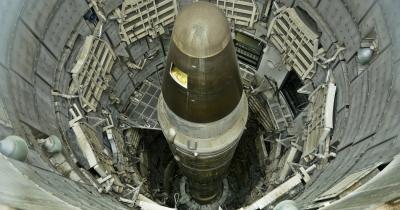
As an 80s kid, I grew up with the possibility of nuclear armageddon in thirty minutes or less always in the background, but my parents generation had to possibility of a version that might take hours or days to play out via bomber. And both our generations grew up with the idea that the USSR was paranoid and aggressive, that the US was just responding to the Soviet threat...it wasn't until later that I figured out that it was mostly the other way around. (Times Russian or Soviet troops have invaded the US: 0. Times US troops have invaded Russia: 1. Nuclear attacks by USSR to intimate US: 0. Nuclear attacks by US to intimate USSR: 2.)
1950s U.S. Nuclear Target List Offers Chilling Insight (www.nytimes.com)
For the first time, the National Archives and Records Administration has released a detailed list of the United States’ potential targets for atomic bombers in the event of war with the Soviet Union, showing the number and the variety of targets on its territory, as well as in Eastern Europe and China.
It lists many targets for “systematic destruction” in major cities, including 179 in Moscow (like “Agricultural Equipment” and “Transformers, Heavy”), 145 in Leningrad and 91 in East Berlin. The targets are referred to as DGZs or “designated ground zeros.” While many are industrial facilities, government buildings and the like, one for each city is simply designated “Population.”
“It’s disturbing, for sure, to see the population centers targeted,” said William Burr, a senior analyst at the National Security Archive, a research group at George Washington University that obtained the target list in response to a request first made in 2006. Mr. Burr, who specializes in nuclear history, said he believed it was the most detailed target list the Air Force had ever made public.
...
The 800-page document, marked “Top Secret” and in a fuzzy gray typescript, comes to light as the issue of air power and the possible targeting of civilians is again in the news....
...
He said that while the document conjured the height of the Cold War, the targeting of urban populations still remained an underlying principle of the use of nuclear weapons to deter attack. “The heart of deterrence is the threat to destroy the adversary’s cities, even today,” Mr. McKinzie said.
...
The 1956 document makes air power the highest-priority target, including 1,100 Soviet-bloc airfields.... But many air bases and command centers were in and around population centers, so even those strikes would have resulted in extensive civilian casualties.
...
Several military historians said Tuesday that while the general principle that civilians should not be targeted dated to before World War I, actual practice had often been dictated by the military needs of the moment....
...
“We’ve known the general contours of nuclear war planning for a few decades,” he said. “But it’s great that the details are coming out. These are extraordinary weapons, capable of incredible destruction. And this document may be history, but unfortunately the weapons are not yet history.”